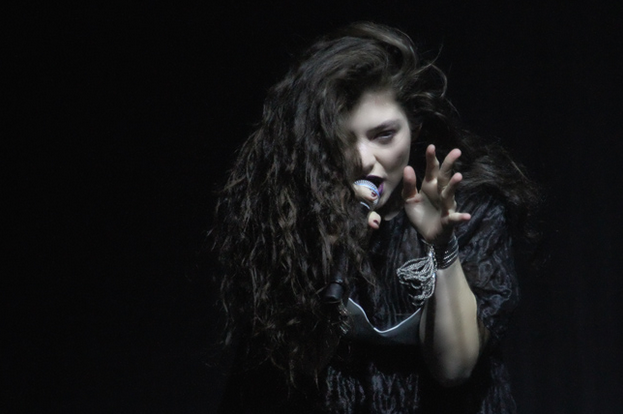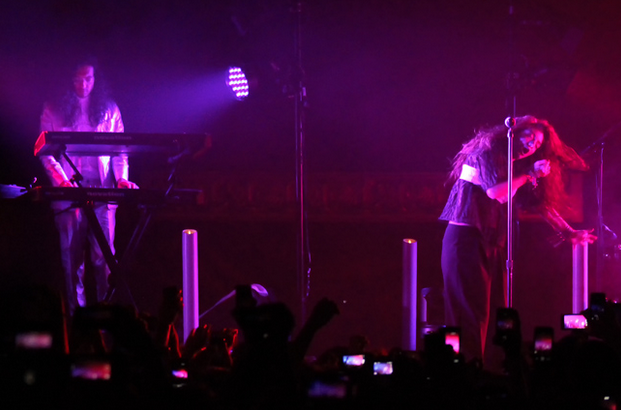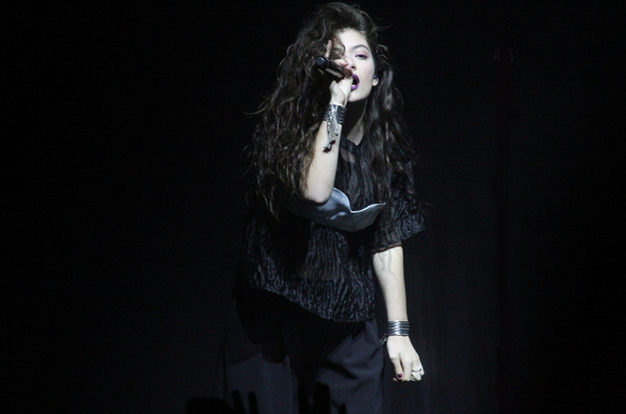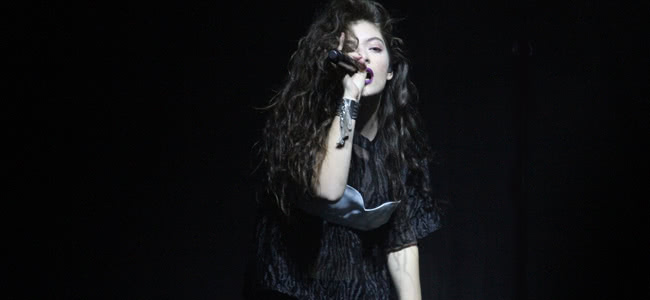A lot can change in a year.
By now it’s a story everyone is familiar with – in 2013 Ella Yelich-O’Connor saw her life transform in the most unconceivable way, going from being a relatively normal 16-year-old high schooler to becoming arguably the most talked about and most successful new name in music.
To put it into perspective, only this time last year was Lorde stepping out onto the stage at Splendour In The Grass as a last-minute fill in for an ill Frank Ocean, known then only as that curly-haired teenager from New Zealand who sang some song called ‘Royals’. And even more of a stark contrast, just months before that Australian festival debut, she had just played her first Melbourne show at the tiny 200-capacity Worker’s Club, with tickets priced at just $10 a pop.
After all, at this point in her trajectory, Lorde had only just unleashed that same Grammy-winning pop masterpiece out onto the world, and it was still months or maybe even weeks shy of its ubiquitous worldwide takeover, eventually skyrocketing her into the no-going-back stratosphere of fame.
Flash forward to the present, as Lorde silently emerges out of the darkness at Festival Hall in front of a sea of glowing smartphones, starting her sold out headline show with the blood-thirsty battle shout ‘Glory And Gore’, it’s immediately clear why she is the world’s most interesting pop star.
When she’s onstage, it’s really impossible to take your eyes off her. Lorde is a flag-bearer of all things weird, embodying what should be the very opposite of pop, but she miraculously manages to fuse oddness and pop and serve it to the mainstream masses.
Dressed tonight in her trademark sports-goth attire – this time it’s a black-and-white Opening Ceremony mesh blouse and loose-fitting suit pants – she stalks across the stage with a sinister gait, looking out into the crowd with a piercing stare.
But of course, that’s only when she’s not completely losing herself to the music with her possessed dancing that resembles a series of frenetic hypnic jerks, or as she later coins it during one of her endearing speeches, someone “thrashing around like Golum”.
Her live stage setup is typically minimalist. A giant black curtain drops midway through ‘Glory And Gore’ to reveal two bandmates – a drummer and the other on synths – and a giant picture-framed screen projected with images of water, leaving for the audience’s full attention to be paid to the spotlighted performer in front of them.
Throughout the night, Lorde and her band treat fans to stunning reworkings of Pure Heroine‘s teen anthems as well as two perfectly-chosen covers – The Replacements’ ‘Swingin Party’ and the recently re-recorded version of Son Lux’s ‘Easy’ – which both served as refreshing curveball surprises whilst also blending in perfectly with the 13-strong setlist of witchy, hexed R&B.
Live, the already stripped-back hip-hop beats in tracks like ‘Buzzcut Season’, ‘400 Lux’ and ‘Royals’ were made into even bigger, bass-heavy canvases, allowing for each crisp click in Joel Little’s subtle production to cut cleanly through the air whilst highlighting Ella’s faultless live vocal performance.
The night’s highlight was ‘Team’, which was morphed into a rapturous seven-minute extended breakdown that was complete with exploding confetti cannons triggered to fire at its soaring climax. When the crowd finally stopped trying to capture the moment on Instagram, they gave Lorde a well-deserved round of foot-stomping applause that left her speechless.
Fittingly, Pure Heroine closer ‘A World Alone’ ended the proceedings, featuring Lorde now draped in a sparkling gold dress-up gown and mindlessly dancing by herself on a stage newly littered with pieces of confetti printed with a cartoon drawing of her face.
Earlier in the night she might’ve talked openly about her crippling fear of becoming an adult, describing adulthood “as a coat you want to wear sometimes, and then you want to take it off”, but for the moment, Lorde seems content with ignoring its increasingly looming proximity.
It was a moment of childlike reverie that reminded us what made Pure Heroine so great: Lorde has an uncanny ability to capture the essence of teenagehood, and unlike most art dedicated to the oft-explored coming-of-age theme, Pure Heroine was made all the more authentic because she created this portrait of her own bildungsroman as it happened and while her memories, thoughts and fears were still raw and vivid.
In that sense, one naturally must wonder where the singer will go next once she has fully graduated into the greyness of adulthood.
The 17-year-old has already proven to us that a lot can change in a year, and if anything, that just makes the prospect of watching her future unfold somewhat scarily exciting.
If it wasn’t for Lorde, pop music would be unrecognisably stale.
Check out of the gallery from the show here.
Set List
1. Glory And Gore
2. Biting Down
3. Tennis Court
4. White Teeth Teens
5. Buzzcut Season
6. Swingin Party (The Replacements cover)
7. Still Sane
8. 400 Lux
9. Bravado
10. Easy (Son Lux cover)
11. Ribs
12. Royals
13. Team
14. A World Alone




































